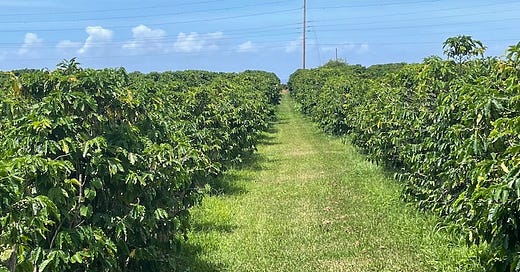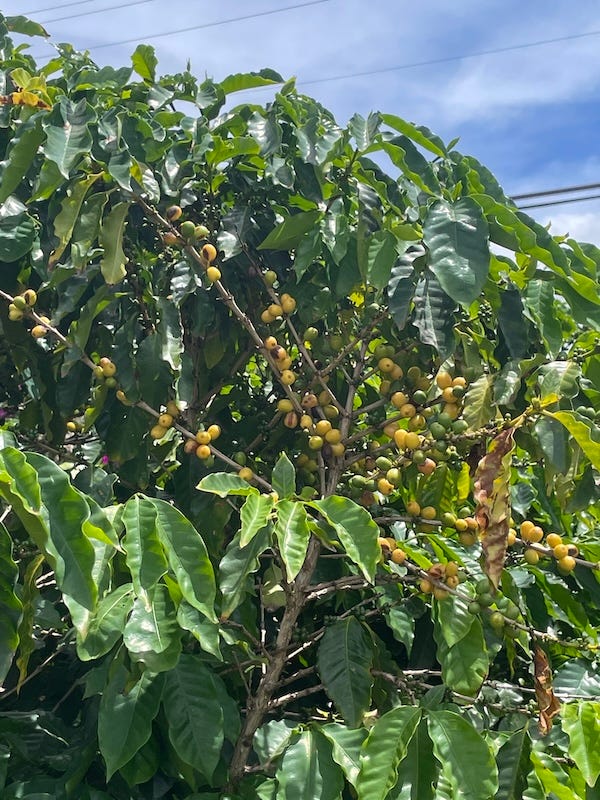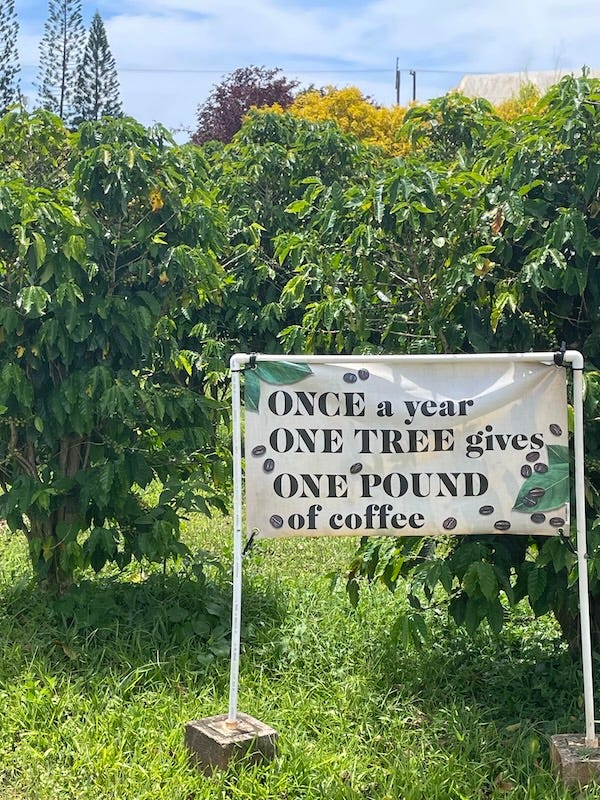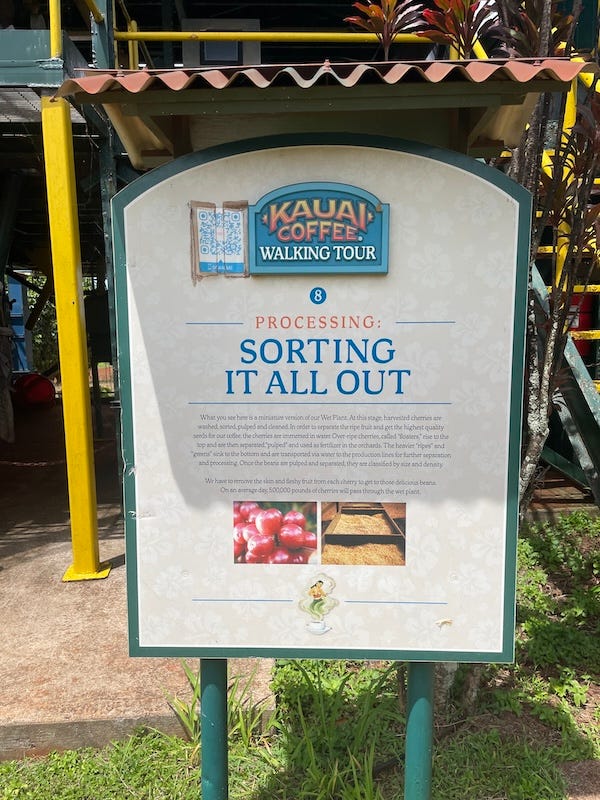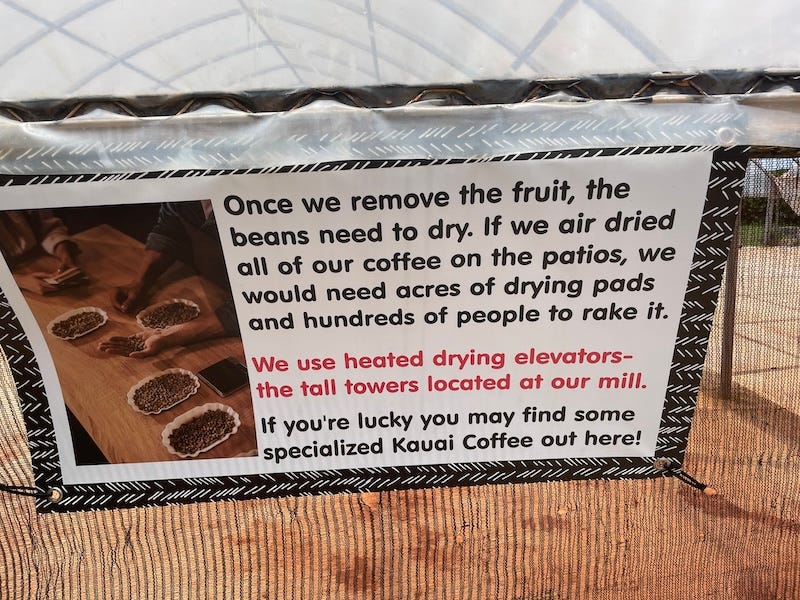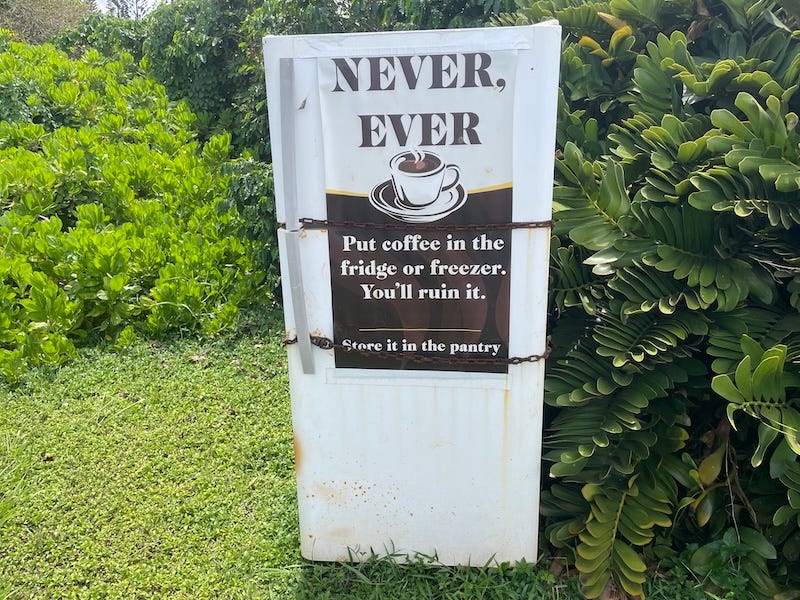A Brief Introduction
Four million coffee trees on 3,100 acres. That’s the size of Kauai Coffee Company’s coffee farm. This is one extraordinary scene of the vast property.
Ever since we moved to Kauai in late 2021, Dorothy and I had wanted to take a tour of this coffee farm. We opted for a guided bus tour in mid-June, and we weren’t prepared for sights such as this one. We had thought that Kauai Coffee Company farm was just a small operation nestled into the southeastern corner of our island. How wrong we were!
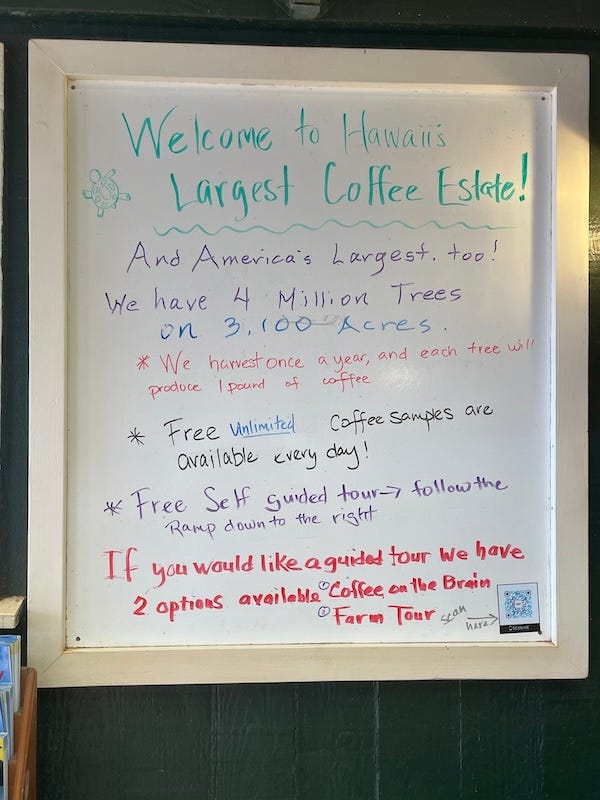
Before our tour began we tasted several coffees at a sampling table. I learned that medium roast coffee beans are higher in caffeine than dark roast beans, but I prefer the flavor or dark roasts.
As we rode through the coffee farm, our guide told us about the farm’s history and the history of coffee growing in Hawaii. She also related how Kauai Coffee Company differed from most coffee farms in being totally run by machines.
Our tour lasted about 1 1/2 hours, and as we got off the bus we learned of a self-guided walking tour. This is well-worth the short walk because the signage is very informative and you get to learn about every step of the coffee making process.
Growing Coffee
It takes 3 to 4 years for newly planted coffee trees to bear fruit. This fruit, or cherries, take about 8 months to fully ripen, turning from green to bright red as they mature. At the cherry’s core is the seed, or bean. Usually two beans come from one cherry; but sometimes just one bean, a peaberry, develops. The ripe cherry itself is sweet and you can eat the fruit.
Once a coffee tree begins producing cherries, its most productive period lasts for 7 to 20 years. At Kauai Coffee Company, one producing coffee tree will yield one pound of coffee beans a year from the once a year harvest.
Coffee thrives in tropical climates and does especially well in volcanic soil. The soil here has a reddish tint. The trees are exceedingly hardy and some live for 100 years.
Growing at near sea level, these trees receive abundant sunshine and warmth. Irrigation comes from the waters of Mount Waialeale, the wettest spot on earth with over 450 inches of rain per year. Located in central Kauai, some of the rainfall is diverted to the Kauai Coffee Company farm to irrigate the coffee trees.
Kona coffee farming on Hawaii Island is entirely different from the Kauai Coffee Farm. In the Kona region, hundreds of family operated farms of just a few acres each make up the coffee belt on Hawaii Islands’ west side, where the elevation is from 700 to 2500 feet. This “belt” is 2 to 3 miles wide and about 30 miles long with coffee trees growing on the volcanoes Hualalai and Mauna Loa. Misty air usually bathes the coffee trees in the afternoons, and natural rainfall irrigates the coffee trees.
Coffee Harvesting
At Kauai Coffee Company, the entire farm is run by machines. It’s such a vast operation that automation is the only way. Huge machines harvest the ripe cherries in one fell swoop. In Kona, the cherries are hand-harvested over a period of time so that only the ripest ones get picked.
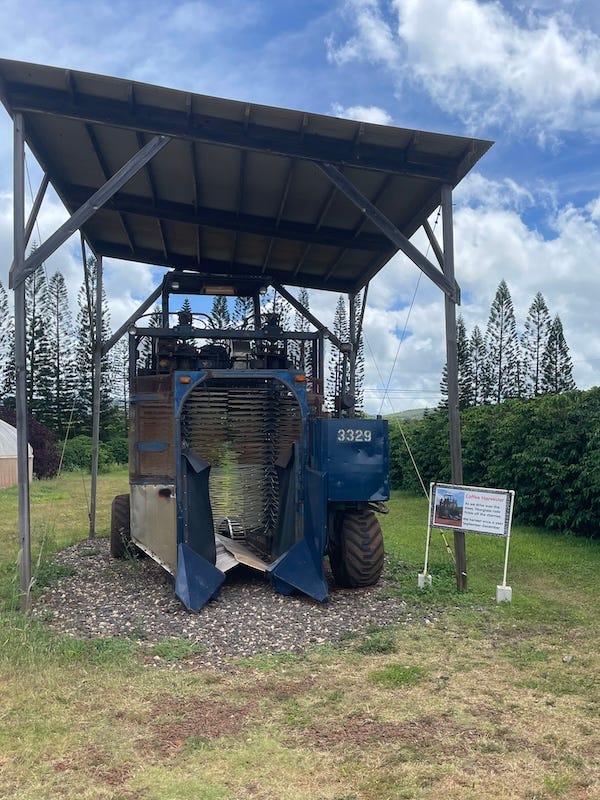
Sorting the Harvest
The harvested cherries are moved to an area called the “wet plant” where they’re dumped into a very large water bath. The ripe cherries sink and the overripe ones float. The “floaters” are collected, pulped, and used for fertilizer in the orchard. The heavier cherries are transported by water to the production lines for further processing to separate the pulp and skin from the beans. The beans are classified by size and density.
Drying the Beans
Grading the Beans
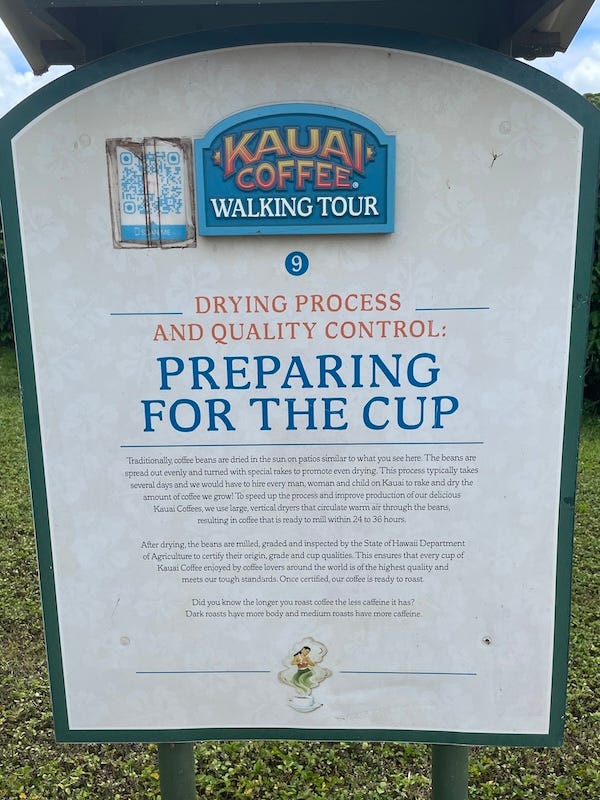
Bagging the Coffee

A Friendly Reminder
Buying Kauai Coffee
Many markets sell Kauai Coffee Farm coffee, but for the best and freshest coffee, you can order online or visit in person. Their coffee is smooth and delicious,

